Feature image of Kay shot by Tiph Browne.
Fashion happens when clothing is bought and sold, on display, snap shot, formal or flamboyant, fabulous. But understanding fashion as merely a commercial exchange or an aesthetic sensibility forecloses the possibility that it might do something else or emerge from somewhere else. Fashion is what we refuse to wear as much as what we choose to wear, are forced to wear, can afford to wear. Fashion can be the anticipation of an outfit and the sounds of affirmation or harassment that receive it. Fashion can happen in debt, in dislocation, in self-defense.
This insight is not new. And yet, when presidential candidates speak of carpet-bombs and super-predators, when poison is profitable and profiling is policy, it becomes necessary to consider fashion in the context of empire. And in light of recent contagion scares, where the transnational movement of black and brown bodies are made to symbolize illness or its possibility, visual markers of disability and gender variance arouse heightened suspicion and accusations of masquerade.
In response, queercrip aesthetics can be the occasion for survival work: revoking, re-routing and disrupting dominant understandings of how bodies move, breath, are held and are in holding. The models below — Kay Ulanday Barrett, QueenTite and Jax Jacki Brown — evoke multiple queercrip encounters: the interweaving of ancestry and accessibility, the ongoing medical surveillance by and within queer and transmasculine communities and the colonial hauntings that inform who and what is deemed fashion-able. In turn, the artists, writers, cultural workers and community members involved in this project engage fashion as a way of longing. A way of being together without a prescription for repair, without an end plan, in love, in suffering, in memory, in rehearsal.
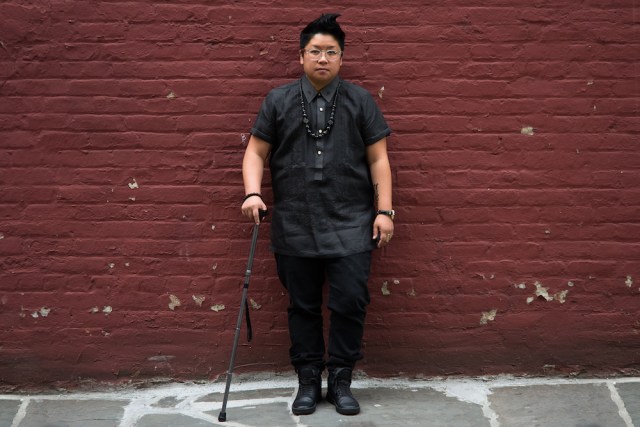
Kay Ulanday Barrett: If you look up hashtags #ftm, #transmen, #TMOC or #selfmademan, there’s an obsession and emphasis on able-bodied thinness and fit masculinity. Every time I peruse those hashtags it assumes a masculinity that feels cut and paste, feels closer to colonial conceptions of brown cis binary masculinity uninteresting to me. Spoiler alert: The RUN! JUMP! SWIM! WOOHA! bro archetype doesn’t make anyone more trans and isn’t everyone’s life.
White supremacy and eugenics have informed us that there’s a specimen of brown masculinity and migrant masculinity that is only worthy if it can achieve labor and physical laborious tasks for white capital. Brown cis men can lift, move, carry cargo and for cis straight white American elite, then you can stay, you can be here among us, just close enough to be almost human. This is how my uncles, cousins and cis men in my brown family learned the American dream. Be useful in the fields, wiping up tables, carrying the luggage of rich white Americans and here, you can live a life at the helm of bootstraps. However, if your body or mental health capacity doesn’t fit in this schema, if you are tender or not extrovert or loud, what then?

QueenTite: I describe my style as a mixture of androgynous Nubian Funk. Fashion is non-verbal communication. I speak with my clothing, my vibe in that attire, and pure confidence in my self-expression. I express my androgyny by pushing the boundaries of who I am and can be. At times masculinity is my armor. Though I love my curves, my breasts, my flaws, I don’t want those assets on display. I want them protected and selectively shared.
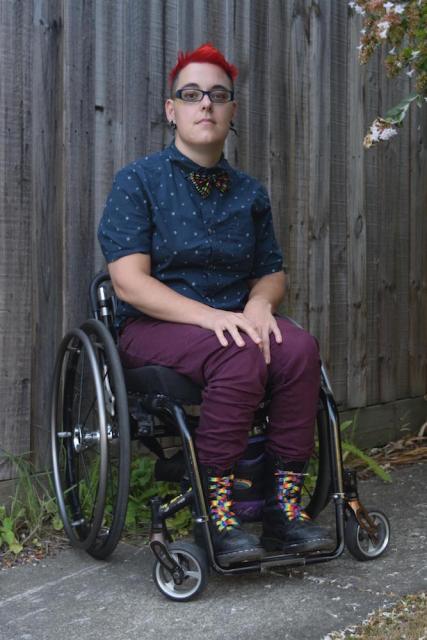
Jax Jacki Brown: Masculinity shouldn’t be about muscularity, strength and physical prowess. By consciously performing masculinity in a queer disabled body, I show that masculinity is broader than we sometimes assume. My signaling of masculinity is not always read as such. A sexual identity cannot, in the minds of many non-disabled people, exist in the presence of disability, so I am often read as a punk, or deemed “confused” instead of seen to be deliberately signally queer sexuality and destabilizing gender norms and expectations.
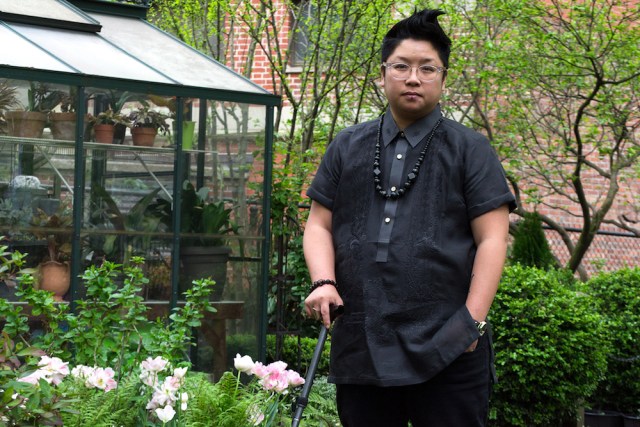
KUB: I’d consider my look to be homeboi switchy homeland swag on a budget. From the beads around my neck to the click of my cane, I use patterns and themes that remind me of my homeland, of my brown culture, of my lolo and titos, of the kid who was beat up in the 90s for dressing what was classed as poor and a place of ridicule with loud ass colors but now, said looks have been burgeoned as nostalgically hip by white and rich people alike. My fashion helps me chart back to my culture, helps me connect to ancestors and puts me in conversation with them. My aesthetic is a cultural strategy to stay alive and to carve out a space of flyness that is so unique that no store can reproduce. Queer and poor people inspire fashion, so often are our looks co-opted, the crip and SDQ (Sick and Disabled Queer) origination of fashion is inevitable and has been happening.

QT: I was born with club feet and had both legs broken to straighten them. Pain for me is associative to my feet, knees, and legs. Though I’m almost six feet tall I have a secret love for heels, yet my body barely allows it. Instead of seeing a loss of something I started incorporating funky socks, sneakers, boots, sandals, loafers, stockings, anything flat really to accentuate my style. This way my body still gets its required support while looking stylish.
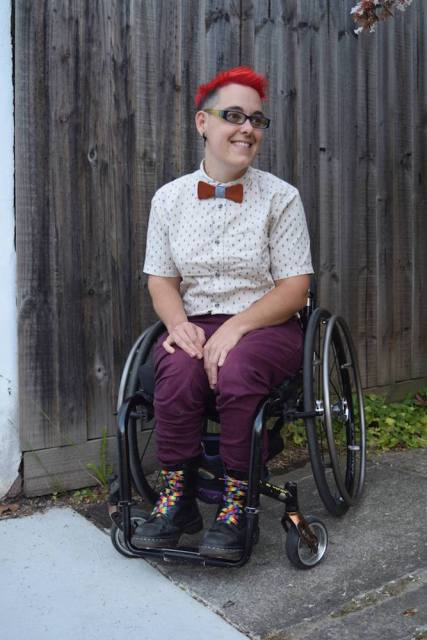
JJB: Being a manual wheelchair user I have powerful shoulders, which makes me feel sexy. My chair is silver and black, so it is sleek, minimalist and goes with all my outfits. My chair is most definitely a masculine-of-center chair. I feel really connected to my chair, like it’s an extension of my body. It carries my sweat. I live on it, fuck in it. It contains my sexuality and identity just as much as my clothes do. It’s part of me and my personal space, so when people come and start pushing without asking, or sit in my chair while I am not in it, I feel really invaded, like they are treating my body as public property.
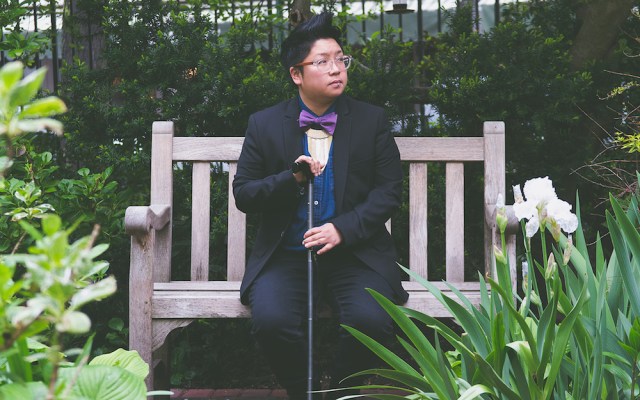
KUB: I think my cane compliments me in every way. My assistive device is my normal in a world that finds it out of place and degrading. My cane is a full extension of my body when I need it to be. My style is as interdependent as the support and care I need, every part has a function and moves with my whole body and spirit. In my brand of brown gender non-conformity, I can get a mixture of responses depending on my environment. Sometimes it’s calling me a “pimp,” which I do not identify with at all, but for some reason there’s an ableist assumption that people with canes are either desexualized or hypersexualized. I think my cane usage is perceived as a demonstration of weakness for my brown queer masculinity to many normie people. It is unfortunate for those people as I’ve learned to realize: (1) weakness isn’t negative; (2) my cane engages, it’s a drum beat to this earth and connects me to the ground and my environment that feels closer to the world.
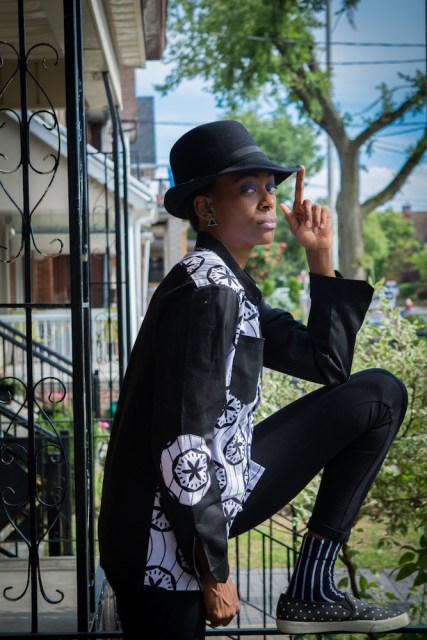
QT: I have seen members in my own community becoming overly aggressive and misogynistic to fit an image, though they are actually quite sensitive and kind. I’ve seen the over sexualization of the black androgynous/stud female. Which plays into ego, possession, fetishizing and leads back to this ownership of a POC. I’ve seen QPOC trying to downplay their color, their abilities, and their strengths in order to acquire access to needed resources as well. Which can be quite demeaning and embarrassing.
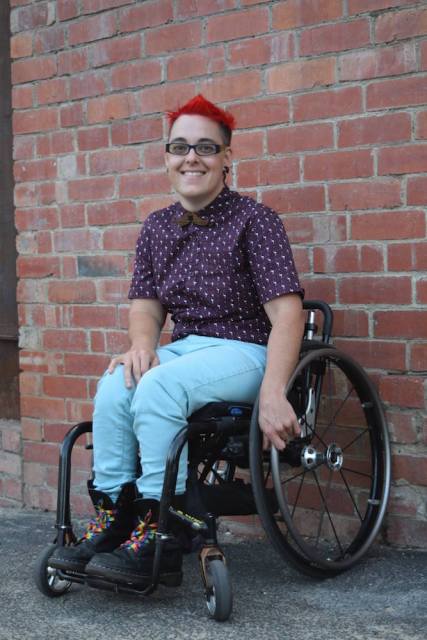
JJB: Crip queer visibility is fundamentally important in my life. Having my sexuality be visible and out and proud is core to who I am and enables me to find other queer crips. Being able to explore and express gender and sexuality, regardless of the presence of disability, is important for everyone and needs to be accessible for all. Having access to clothes that enable me to express an aesthetic that makes me feel at home in my skin and proud of my identities is fundamental to my sense of self and my politics.
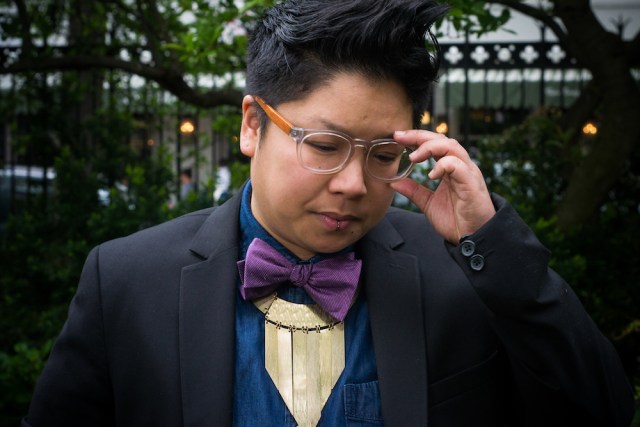
KUB: I get up everyday and I am told that whatever I am isn’t real. Real brown men don’t limp or wobble, real gender non-conforming people are thin or are on T, or have full time jobs, etc. I was raised in the U.S. empire where brown straight masculinity and femininity are vehicles entrenched to be disposable, their central purpose as brown labor is for whiteness, for white straight cis people, to maintain their wealth and capital — their houses, business, their children. Ableism check, misogyny check, racism check. The idea is that if we work hard enough, individually, we too can be successful. What happens when you cannot be a brown laborer in physical productivity? Being sick and disabled, many people defy and subvert mainstream gender expectations.
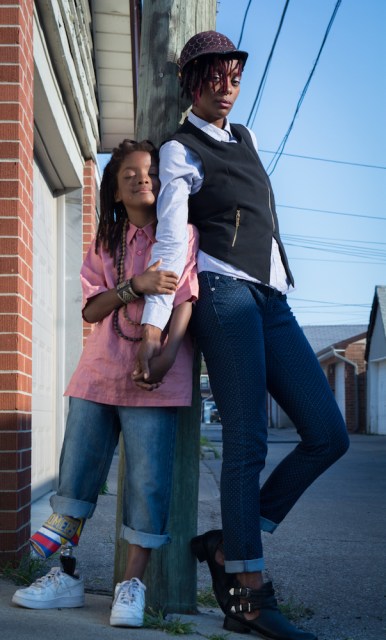
QT: Visibility would be major. It would mean an actual shift into inclusivity. It would mean having kids like my son, Iahnijah, recognizing someone like themselves. Which always promotes inclusion and self-pride. Visibility gives a platform for many folks to shine and give hope to; something to aspire to; something to succeed at. Embracing accessibility begins with representation. We need crip/queer visibility in key decision making roles to implement changes and act as that visual representative.
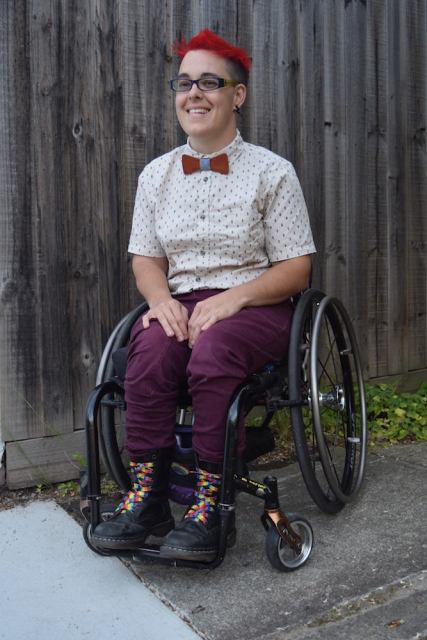
JJB: Disability allows me to live a different and unique life, to move through the world differently, to see things differently, to question and explore identity, power and explore disability as a sociopolitical question. My cripness also allows me to explore gender as so much more then a simple binary, as existing in a web of socially produced expectations and norms. For me this intersection, this way of dressing, proclaims pride, pride in my body, my queer identity. I like the way I look and dress, I like that it signals queer and that it suggests that I hold a radical politic, that I fuck and move in a non-normative way and I’m proud of it, that I am not the stereotype of disability as passive, as tragic, as non-sexual, but instead I am proud, passionate and political.

KUB: At various photo shoots and hip queer places, I am usually the one person using a mobility assistive device; I am usually the token. Get any fashion-forward queer media source with a top list of any kind, bet you, no one uses assistive devices, no fat people, no diasporic longing. I realize with my chosen family how normative U.S. masculinity makes for binary expectations of consumption, desirability, how articles of acceptance only go so far to cater to cis American glorification. How our bodies are not even consumable. How this approach to authentic trans displaces the transfemme, the disabled, the poor, the fat, the rural and the awkward. How we’re exhausted by misogyny. How I am to succumb to it, impose it on others. When fashion and the world at large can realize that access needs are meant for everyone to have a better and more engaging experience, not reserved just for the privileged few, then the resistance of ableism and arguably all forms of oppression can expand a wider and more glorious participation. Does fashion want that participation is the question.
Special thanks to the photographers who gave their time, care, creativity and vision to this project: Tiph Browne, Shawntol Drakes and Anne Standen.







